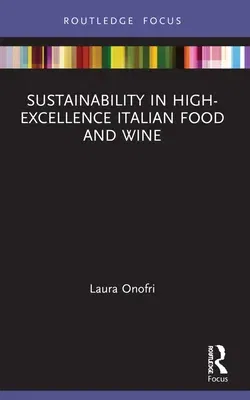This book presents contemporary case studies on selected Italian food
and wine products to explore how traditional production and consumption
models address and adapt to the sustainability challenges in the Italian
high-excellence agri-food sector.
Sustainability in High-Excellence Italian Food and Wine adopts a
transaction cost economics approach, which is applied to five case-study
chapters, each focusing on a key Italian agri-food product: Parmigiano
Reggiano, Mozzarella di Bufala Campana, Amarone wine, Prosecco wine, and
Prosciutto di San Daniele. The production and organization of these
products face many challenges as they seek to balance competing
priorities around economic viability, maintenance of high-quality
standards and environmental and social impacts. The book argues that the
development of sustainable and quality models requires changes to the
structure and organization of the supply chain while also acknowledging
that consumers are increasingly demanding authentic, high-excellence
products that require reliable labeling systems and designations of
origin mechanism. Recommending that hybrid structures, such as
cooperatives and consortia, are the most cost-minimizing governance
structures for the production, the book highlights that in the case of
Italian excellency food, environmental sustainability and economic
efficiency are not actually traded off but are reciprocally valorized
through the regulation of high-quality standards.
This book will be of great interest to students and scholars of food and
wine excellence products, food systems and supply chains, agricultural
production and economics and sustainable consumption.

